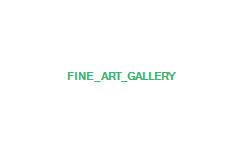Slow Down, You Move too Fast.

I stood mesmerized.
After staggering through crowded, chattering galleries at the Rijksmuseum in Amsterdam, I was stunned to discover an entire group of patrons standing silently in front of a few diminutive canvases. No one dared interrupt the intimacy portrayed in Jan Vermeer's paintings.
Very few artists have the power to render an entire group of hurried tourists speechless. Jan Vermeer's paintings stop you in your tracks. They inspire contemplation.
Moving toward my favorite of the four paintings, "The Love Letter," I realized that I was looking at a seventeenth-century snapshot.
A scene of domestic intimacy is revealed by a curtain pulled aside. A woman, clothed in yellow, is handed a letter. She glances up questioningly at her maid and pauses her music. The room is brilliantly illuminated by window light; the space in front is darker. A broom and a basket of clothing sit on the graphic tiled floor. The tiles, in turn, lead us straight into the center of the composition — the woman's heart. Vermeer masterfully depicted a quiet, unassuming moment in a spontaneous, sacred manner.
I stood there for nearly 15 minutes, transfixed by the stillness of the moment.
Years ago, my art history professor encouraged me, the lone photojournalist in his class, to attend a colloquium about Jan Vermeer's use of a camera obscura. Since then, I have been hooked on the Dutch master's work.
The term "camera obscura" means "dark room," and the optical device intensifies what is seen with the naked eye. A small hole in a booth or box pulls the image that is directly outside, via light rays, into a darkened space. Then, the image is projected (often upside down) on the booth or box's opposite side. The camera obscura was used as early as the mid-fifteenth century, and could project an image of sunlit objects placed before it with extraordinary realism. A keen sensitivity to the effects of light and color, and an interest in defining spatial relationships, encouraged Vermeer to experiment with a camera obscura.
Vermeer had an uncanny relationship with photography — he was on a quest to discover the way light shapes our view of the world. The manipulation of light and shadow served to intensify his compositions. Light was Vermeer's muse; he experimented with it constantly. Radiant light comes from somewhere beside or behind his canvases. Subtle gradations of reflected light are skillfully depicted on exquisite jewelry, bright eyes, kitchen utensils, musical instruments or a woman's open lips. All objects catch the light, creating a calming, otherworldly atmosphere. Indeed, it is the lens-like quality of Vermeer's paintings that makes them seem a small step away from actual photographs.
If you want to read more about Vermeer and the camera obscura, read Philip Steadman's excellent book Vermeer's Camera: Uncovering the Truth Behind the Masterpieces.




3 Comments:
great post!!!!
http://girl-with-a-pearl-earring.20m.com/new_form_page.htm
Wow, this is incredible. Thanks so much for sharing it with us!
Best,
Rachel (on behalf of the LaCour team!)
I always wanted to know what camera obscura meant - thanks for illuminating me (pun intended)!
Post a Comment
<< Home